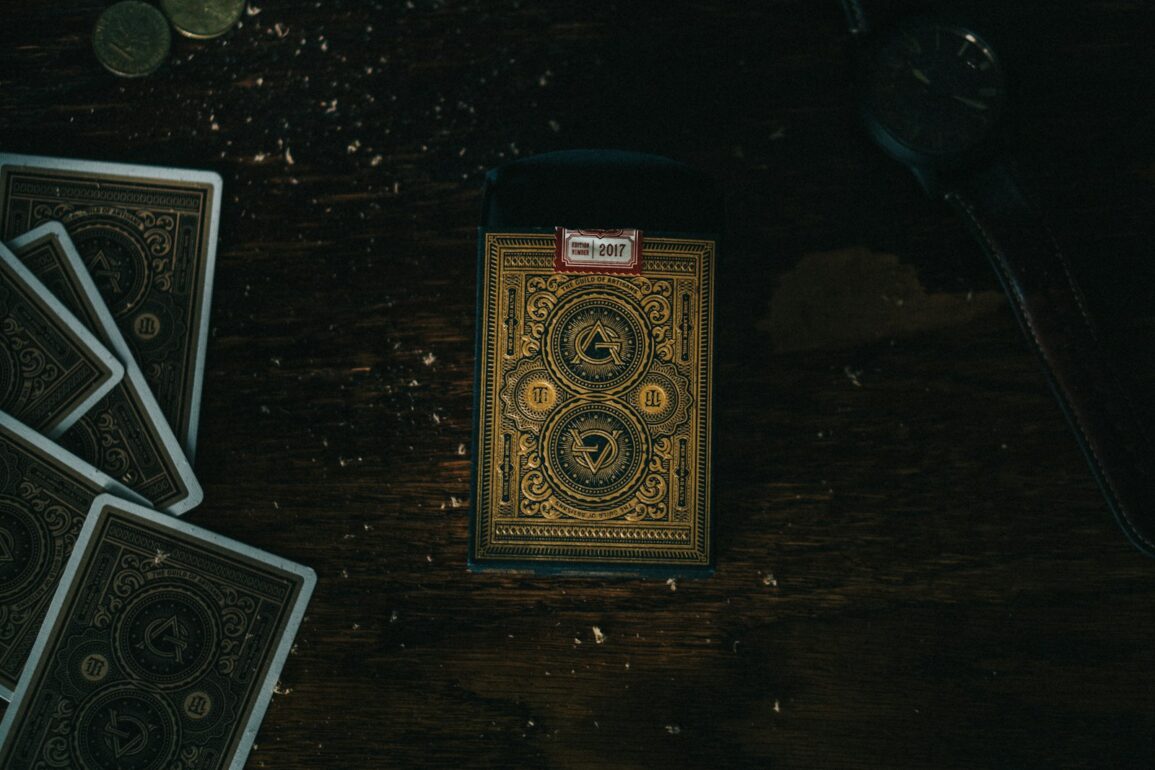Can tarot tell you how someone feels about you? It’s the question on everyone’s mind when they shuffle the deck.
Tarot cards, with their rich imagery and symbolism, have been used for centuries to peek into the human psyche.
They’re like a mirror reflecting our deepest emotions and desires. I’m Laura Petit, an evolutionary astrologer with a knack for tarot, and I’ve spent years navigating these mystical waters. Join me as we explore the captivating ways tarot can unveil the emotions of others.
And, if you’re curious about the art of decoding the unknown in the realm of feelings and emotions, be sure to check out our article about the secret meaning of tarot cards in love (the full deck unveiled).
Key Takeaways: Can tarot tell how someone feels about you?
Yes, tarot cards can indeed provide glimpses into another person’s emotions towards you, offering valuable insights. It’s crucial to approach these readings with flexibility, as interpretations can vary widely. Engaging with tarot requires an open heart and an open mind to truly understand the nuanced messages the cards may reveal about someone’s feelings.
1. The Heart of the Matter
When it comes to unraveling the complex web of someone’s emotional world, tarot spreads are a go-to tool.
They’re like a secret passageway to understanding the hidden layers of feelings. Each card’s position acts as a window into different emotional states, from the most obvious to the deeply concealed.
As someone deeply immersed in the ebb and flow of relationships, I’ve seen the accuracy of these spreads firsthand. They can reveal not just romantic feelings but also the dynamics of platonic and potential relationships.
Tip: Clear your mind before you start. A focused question leads to a clearer answer.
You may like:
The real deal on online tarot reading accuracy
The Emperor and feelings: 8 insider tips to master the art of understanding unspoken sentiments
2. The Cards Don’t Lie
The rich symbolism of tarot cards is a silent language that speaks volumes about our innermost feelings. Each tarot card is a mosaic of images, colors, and symbols, each with its own tale and feelings to tell.
For example, Cups cards are swimming in the waters of emotion, while Swords might be cutting through a fog of mental conflict. This isn’t just about pretty art. It’s about how the cards relate to each other, weaving a story that can reveal someone’s current feelings with surprising clarity.
As a keen observer of the heart’s secrets, I’ve learned that these symbols can often disclose more about emotional connections than direct conversation.
Tip: Let the symbols spark your intuition. They’re often the key to unlocking the true message.
You may like:
Read Before You Ask The Oracle a “Yes or No” Prediction (10 Things You Should Know)
3. The Energy Connection
When it comes to a tarot reading, there’s an invisible thread that connects us all. A card reader taps into this by feeling the subject’s aura.
It’s like tuning into a radio frequency that’s buzzing with personal vibes. On places like Reddit, you’ll find stories of readers who’ve felt a querent’s energy from miles away.
This isn’t just about the shuffle or the pull—it’s about the connection. And it’s this energetic link that can make a tarot spread truly sing with relevance to the querent’s life.
Tip: Take a moment to center yourself before a reading. It helps in tuning into the right frequency.
4. “Mirror, Mirror”: Reflecting Personal Bias in Tarot Readings
Peeking into tarot cards to gauge someone’s feelings is a delicate task. It’s all too easy for our own hopes and fears to sneak into the picture.
Like a mirror that reflects our own image, a tarot spread can sometimes show us what we want to see. As someone who’s observed the pitfalls of personal bias, I know it takes practice to step back and let the cards do the talking.
The cards are messengers, not puppets, and they’ll reveal the truth if we listen without interference.
Tip: Reflect on your emotional state before a reading. It helps in providing a clear, unbiased interpretation.
5. The Suits and Emotions: Cups, Wands, Swords, and Pentacles
In the realm of tarot, each suit of the tarot deck carries its own emotional frequency, and here’s how cards help tell how someone feels about you.
Cups overflow with the waters of love, hinting at the deep well of romantic feelings or the gentle ripple of a platonic relationship. Wands crackle with the fire of inspiration, yet they can also burn with the frustration of unexpressed feelings or the warmth of a happy relationship.
Swords, with their sharp edges, often reveal the mental conflict or clarity within a current connection. Pentacles, rooted in the earth, show us the tangible outcomes of our emotional investments and the stability of a balanced relationship.
Tip: Dive deeper by pairing the suit with its element—water’s intuition for Cups, fire’s dynamism for Wands, air’s intellect for Swords, and earth’s practicality for Pentacles.
6. Timing is Everything: When the Cards Speak of Current Feelings
Timing can be a revealing aspect in a tarot reading, especially when you’re seeking insight into someone’s current feelings.
The tarot deck, with its rich symbolism, can act like a clock, with certain cards chiming in at just the right moment. For instance, the Page of Cups might bubble up with the innocence of new emotions, while the Five of Cups could be mourning past regrets.
Understanding the timing of the cards can provide a snapshot of someone’s emotional state in relation to you at this very moment.
Tip: Stay aware of timing cues in the spread—rapid movements with the Eight of Wands or cyclical changes with the Wheel of Fortune.
You may like: The New Moon Tarot Spread for Harnessing the Energy of the Lunar Cycle
7. The Power of Position: Card Placement and Its Emotional Significance
The position of a card in a tarot spread can shine a spotlight on its emotional significance. Just like actors on a stage, where they stand affects their part of the story.
A card nestled in the ‘hopes and fears’ slot might whisper secrets about what someone hopes to find or is scared to face in a relationship. It’s a delicate interplay between location and meaning, with each card’s placement unveiling a new piece of the emotional puzzle.
Tip: Take note of the cards in positions that reflect the subject’s feelings or the potential outcome—they’re often pivotal to the reading’s message.
Hidden Gem: The Quiet Cards
Some tarot cards speak in hushed tones, offering subtle glimpses into the depths of someone’s feelings.
These quiet cards, like the contemplative Four of Cups or the introspective Hermit, may not be as flashy as others, but they’re the ones that often reveal the most about the true state of someone’s heart. In the soft murmur of these cards, you may discover a profound understanding of deep, unspoken emotions.
Tip: Don’t overlook the less dramatic cards; tarot messages are sometimes the most revealing when it comes to telling how someone feels about you.
8. Asking the Right Questions
In tarot, the magic is as much in the question as it is in the answer. Crafting your query with care can mean the difference between a vague notion and a vivid portrait of someone’s feelings.
Ask with specificity, and the cards will respond in kind. It’s not just “What are their feelings?” but “What are their intentions toward me in this relationship?”
Tip: Frame your questions to reflect the depth and direction of the emotional insight you seek.
Hidden Gem: The Reverse Revelation
Reversed cards often get a bad rap, but they’re actually treasure troves of insight, especially when it comes to hidden emotions.
A reversed card can signal blocked or repressed feelings that haven’t yet surfaced. They can indicate an internal struggle or emotions that someone isn’t ready to confront.
So when cards are upside-down, take a closer look; they might just reveal the secrets someone is keeping from themselves.
Tip: Embrace reversed cards as a chance to explore the shadow side of emotions.
9. The Lovers’ Dance: Identifying Reciprocal Feelings Through Tarot
In the delicate waltz of relationships, tarot can reveal if both partners are in step with each other.
Cards like The Lovers and Two of Cups may suggest a mutual adoration, while a one-sided show of the Six of Swords might imply emotional distancing. It’s a dance where the cards lay bare the give-and-take, or the lack thereof.
Paying attention to these signals helps you understand the balance of affection in any connection.
Tip: Notice which way the characters on the cards are facing; this can indicate whether there’s a mutual gaze or averted glances.
10. Beyond the Veil: Using Intuition to Access the Unseen
Tapping into intuition is like lifting a veil to reveal the unseen emotional currents in a tarot reading. It’s that inner voice that whispers insights as you interpret the spread before you.
When you combine the imagery of the cards with that intuitive nudge, you access a deeper layer of understanding about how someone feels, often capturing the subtleties that the conscious mind might miss.
Tip: Cultivate your intuition by meditating before a reading; it helps clear mental chatter and heightens sensitivity.
Hidden Gem: Elemental Influences
The four elements—fire, water, air, and earth—infuse tarot cards with a unique emotional flavor.
Fiery cards spark passion and action, watery cards flow with deep feelings, airy cards flutter with thoughts and communication, and earthy cards ground emotions in the physical world. Recognizing these elemental undercurrents can add a rich layer to your understanding of someone’s emotional state.
Tip: Pair the element with the suit for a nuanced reading; for example, fiery Wands with passionate actions or earthy Pentacles with practical emotions.
11. The Major Arcana’s Major Impact
The Major Arcana cards are the headliners in the tarot’s theater, each one stepping into the spotlight with a message that can shake the emotional ground beneath us.
Cards like The Empress, brimming with a nurturing essence, may signify a love that’s as deep as an ocean. On the other hand, The Tower, with its sudden disruption, might point to an emotional earthquake, shaking the very foundations of what we feel.
These cards don’t merely touch upon feelings; they plunge into the emotional waters, revealing the undercurrents that shape our life’s narrative.
Tip: When a Major Arcana card makes an appearance, it’s time to sit up and take notice—they often herald significant emotional milestones.
12. The Court Cards Conundrum
The Court Cards in tarot serve as the cast of characters within our emotional saga. They can be enigmatic, sometimes representing real people who stir our feelings, or they may embody different facets of ourselves.
The nurturing Queen of Cups could reflect someone’s caring influence, while the bold Knight of Swords might suggest a more confrontational emotional approach.
Interpreting these figures is like understanding the roles people play in our lives, shedding light on how they affect our emotional well-being and interactions.
Tip: Look at the Court Cards as mirrors of emotional expression—they often give hints about the nature of our relationships and how we handle our feelings.
Hidden Gem: The Numerology Nudge
In tarot, numbers are more than just a count; they’re a pulse of emotional intensity. The Aces start the journey with potential, while a Ten may suggest an emotional cycle reaching climax.
Twos often talk about connections, and Fives might hint at upheaval. This numerical language can subtly influence the emotional message of a reading, adding a layer of depth to the story and feelings your tarot cards are telling.
Tip: Pay attention to repeating numbers in your spread; they amplify the emotional message and can indicate recurring themes.
13. The Art of Storytelling: Weaving a Narrative from the Cards
A tarot reading is an unfolding tale, and each card is a chapter in the emotional saga. As a reader, you’re the storyteller, interpreting the symbols and archetypes to reveal the narrative.
You weave the disparate threads into a coherent story that resonates with the querent’s experience. This narrative approach brings the emotional landscape to life, making the reading an engaging and revealing journey.
Tip: Let the cards speak to each other; the connections you draw between them create a compelling and insightful story.
14. The Final Card: Summing Up the Emotional Journey
As the tarot reading comes to a close, the final card acts as a summary of the emotional expedition.
It’s the concluding note that ties together all the insights, offering a reflection on the emotional path laid out by the cards. This card can serve as a guidepost, pointing the way forward based on the emotions revealed throughout the reading.
Tip: Consider the final card as both an ending and a beginning; it encapsulates the reading’s message and suggests the next emotional steps.
Conclusion
So, can tarot tell you how someone feels about you? It’s like when you find a secret map in your favorite game that shows you hidden treasures!
Tarot cards are like that map. They can show you cool clues about what someone might be feeling deep down. Just remember, it’s like a puzzle you get to solve with your heart and brain.
I hope you found these 14 awesome ways helpful. If you did, or if you have your own stories, drop a comment below. I’d love to hear from you!
FAQs
Can I ask tarot cards if someone likes me?
Absolutely, you can turn to a tarot reading to explore someone’s feelings towards you. Whether you’re curious about romantic feelings or just wondering if there’s a potential relationship blossoming, tarot cards can offer hints about true feelings. A “does he love me tarot spread” is specifically designed to delve into these queries. Just remember, while a tarot card can reflect current feelings, it’s not a credit card with a guaranteed answer. Each reading is open to interpretation and should be approached with an open mind.
When not to read tarot cards?
It’s wise to avoid tarot readings when you’re feeling extremely emotional or if you’re not in a balanced state of mind. High emotions can cloud your judgment and may lead to biased interpretations. Additionally, if you’re seeking a tarot reading out of sheer compulsion rather than genuine guidance, it might be best to step back and reflect first. Tarot is a tool for insight, not a game to play when bored or anxious.
Can you ask tarot cards about another person?
Telling about another person’s feelings through a tarot reading is a common practice. However, it’s important to do so with respect and without infringing on their privacy. Focusing on your connection with that person, such as your current relationship or emotional connection, is usually more productive than probing into their personal life choices or private matters.
What happens if someone touches your tarot cards?
If someone touches your tarot deck, it’s not the end of the world. Some tarot readers believe that decks can absorb energy, so it’s a good idea to cleanse your deck of cards if you feel the need. Simple methods like shuffling, placing a clear quartz crystal on top, or even just setting an intention can refresh your deck’s energy. Remember, your connection with your tarot deck is personal, and how you handle such situations is entirely up to you.




